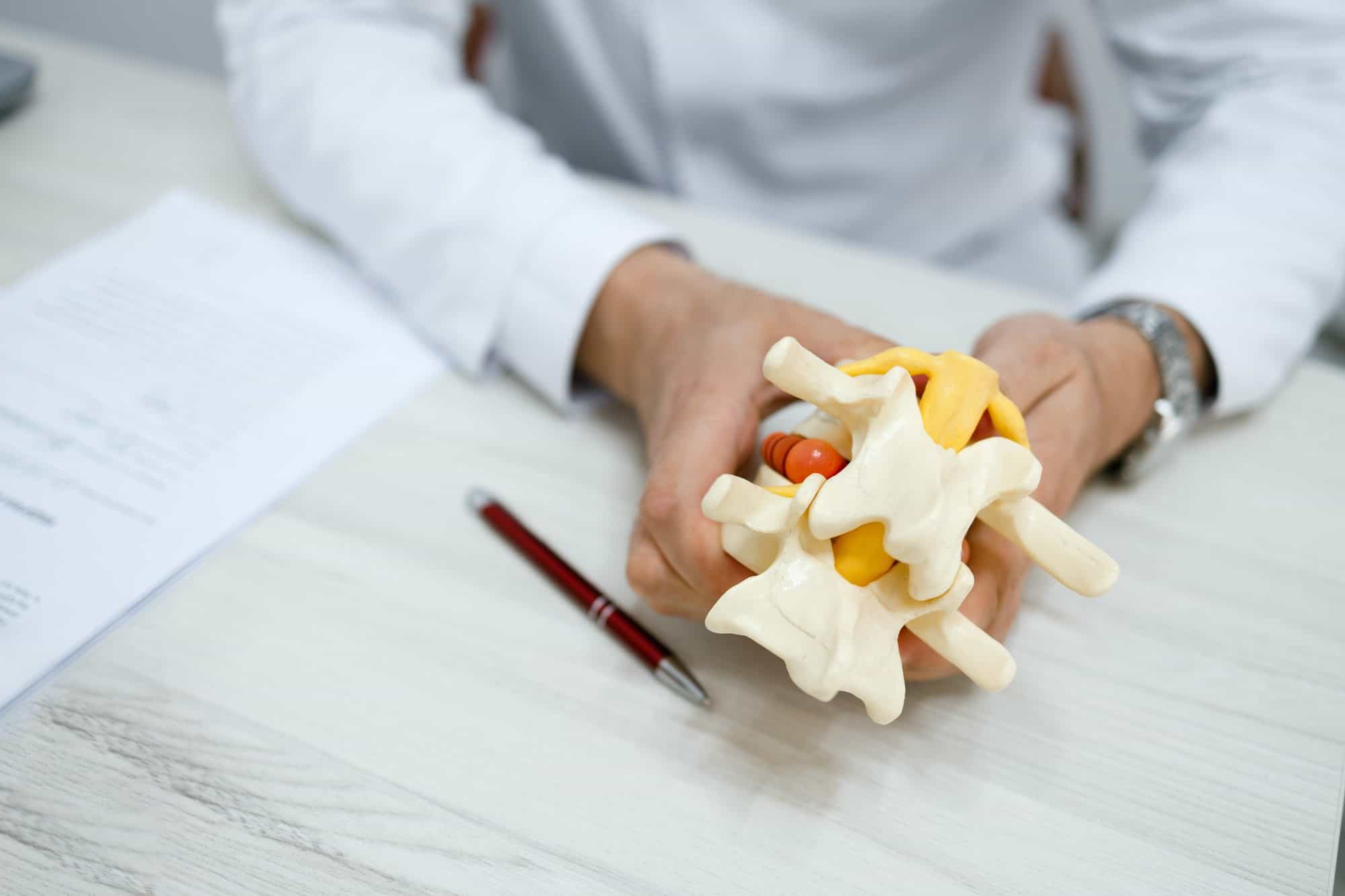The spine has intervertebral discs, that spongy cushion that separate our vertebrae, providing shock absorption and keeping the bones stable. The discs are the filling between each vertebrae of our spine.
As the time goes by, our discs start to show signs of use, changing the elastic substance that we have inside those discs, becoming more stiff and solid. And sometimes these changes can cause problems.
One of the most disc problems is the Degenerative Disc Disease. Even if it is not a condition, it describes the changes our spine discs go through as we get older.
The Degenerative Disc Disease can appear in the whole spine, but it’s more likely to show up in the lower back and neck discs.
What is Degenerative Disc Disease?
Is an age related condition that occurs with repetitive stress and bruises in the spine that aren’t noticed by the time. For most people, disc degeneration doesn’t become a problem. However, in some cases, it can cause severe chronic pain in the disc.
In a healthy young adult, the discs are made of 90% water. As we grow older, the amount of water decreases, the filling becomes more thick and our spine gets shorter. And, sometimes, the disc can get swollen.
So, with our discs getting degenerated, the cushion and the distance between each vertebrae gets smaller and less effective, and your disc structure is affected.
With the stress of movements and injuries over the years can crack the outer walls of the disc, which is very close to the nerve. Any cracks near those nerves can become very painful.
Who can have Degenerative Disc Disease?
As we said, anyone can have Degenerative Disc Disease, but any pain will ever be felt. However, in some groups, it’s easier to develop pain:
- People with obesity;
- People who do strenuous physical work;
- Tobacco smokers.
But it can happen after an accident involving your spine, like a fall, stumble, tilt, bend, lift or twist, and the tingling, pain or numbness starts to be felt.
How to diagnose Degenerative Disc Disease?
The pain in Degenerative Disc Disease can start in three ways:
- With a major injury followed by an unexpected sudden pain;
- With a smaller injury, also followed by an unexpected sudden pain;
- With a progressive pain that starts lighter and gradually gets worse.
The patients will be asked about their medical history, and if they ever fall, injured ou accidented themselves. Then the doctor will do some physical exams that may include verify:
Nerve Function
The doctor can use the reflex hammer in the body. If there’s few or none reflexes, the nerve should be pinched.
Hot and cold stimuli are often used to show how the nerves are adapting to temperature changes.
Pain
Moving the body in specific ways or touching certain areas of your back can help identify a degenerated disc.
The most common exams to find out if you have degenerated disc disease are CT Scan or Magnetic Resonance Images (MRIs).
Are there any treatments for Degenerative Disc Disease?
There are a few options that you can choose, such as:
- Acupuncture, that helps with chronic pain;
- Rehabilitation exercises to strengthen the back and abdomen muscles- yoga, pilates and swimming are a great option;
- Keeping your posture and positions adequate when bending and kneeling;
- Pain killers (as prescribed by a doctor), or any medicines that can help your pain.
- Chiropractic, to help relieve the tension of the muscles on back and neck.
Surgery is only recommended if the patient doesn’t respond to these physical therapies within a few months, and if the back pain is not allowing him to do the daily routine or the medicines are not working properly.
Don’t forget to see a specialist to help you figure out what’s the best treatment for your case. If you are looking for one, come visit us, just book an appointment with one of our doctors!
Here at Broadway Chiropractic and Wellness we are always ready to help you. Know more about our services clicking here.

